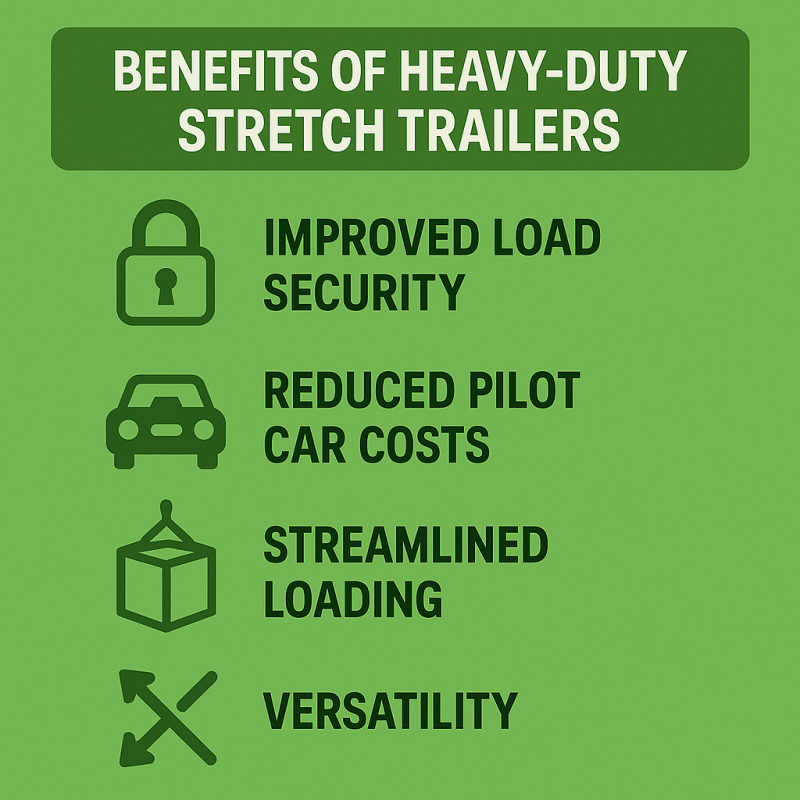When you face long, awkward loads, nothing beats a heavy-duty extendable gooseneck trailer. Also called a stretch trailer, this rig adjusts its deck length to haul beams, girders, and other oversized cargo without overhang headaches. In this guide, you’ll learn how these trailers work, explore key configurations, and discover the best use cases for your next haul.
How Stretch Trailers Work
An extendable gooseneck trailer features a sliding deck that moves between two fixed points. You unlock the rear kingpin assembly, pull the deck free, and slide it out or retract it to match your load length. The gooseneck remains stationary at the front, connecting to your fifth wheel like a standard bull-nose trailer.
Hydraulic or manual locking pins secure the deck once you reach the desired length. This mechanism balances the load and keeps your trailer compliant with legal length limits.
Key Configuration Options
Manufacturers design these trailers in a few standard setups:
- Base Length
Most trailers start at 48 or 53 feet. Depending on your model, you can extend them up to 80+ feet.
- Axle Configurations
Spread multiple axles—usually in two or three sets—under the extendable section. That setup lets you distribute heavy loads evenly and meet DOT weight requirements.
- Hydraulic vs. Manual Extend
Hydraulic systems adjust power lengths at the push of a button, saving time on busy jobs. Manual pins cut upfront costs and simplify maintenance if you haul only occasional oversized loads.
- Gooseneck Styles
Choose a fixed gooseneck for simple loads. Use a removable gooseneck if you need to drive on for larger equipment.
Matching these options to your needs helps you haul efficiently and safely.
Best Use Cases
You’ll see extendable gooseneck trailers shine when you transport:
- Bridge Beams and Girders: These rigid, long pieces fit flush on the extended deck, eliminating dangerous overhang.
- Windmill Blades: Their tapered shape demands precise support points along the trailer’s length.
- Modular Building Sections: Prefabricated walls and roof segments slide on and off easily when the deck is retracted or extended.
- Steel Pipe and Conduit: Bundled lengths stack neatly on a stretched platform, reducing tie-down points and load shifts.
A stretch trailer keeps you compliant and balanced whenever your cargo exceeds standard trailer lengths.
Benefits of Heavy-Duty Stretch Trailers
Using a heavy-duty extendable gooseneck trailer delivers several advantages:
- Improved Load Security
You match deck length to cargo, so straps and chains sit at optimal angles and tension.
- Reduced Pilot Car Costs
You often avoid extra escort vehicles on shorter extended loads by minimizing overhang.
- Streamlined Loading
With a removable or fixed gooseneck, you drive equipment onto the deck or load from the rear without ramps.
One trailer handles local runs on its base length and oversized jobs when stretched out.
These benefits translate into fewer headaches, safer trips, and healthier profit margins.

Maintenance and Best Practices
Treat your trailer right to keep it ready for every job. Inspect locking pins, slides, and hydraulic lines before each run. Grease slide rails regularly to prevent corrosion or jamming.
Check axle bearings and tire pressure under different deck positions—uneven weight distribution can hide low-pressure spots. Finally, store jacks and locking tools inside a weather-proof box on the trailer to avoid losing critical pieces on the job site.
Ready to Haul Like a Pro?
An extendable gooseneck trailer offers unmatched flexibility when you handle oversized or extra-long freight. You’ll confidently tackle any specialized load by picking the right base length, axle setup, and extension mechanism. Keep up with preventive maintenance, follow DOT guidelines, and your trailer will serve you for years. Now get out there, extend that deck, and move heavy-duty loads like a pro!





